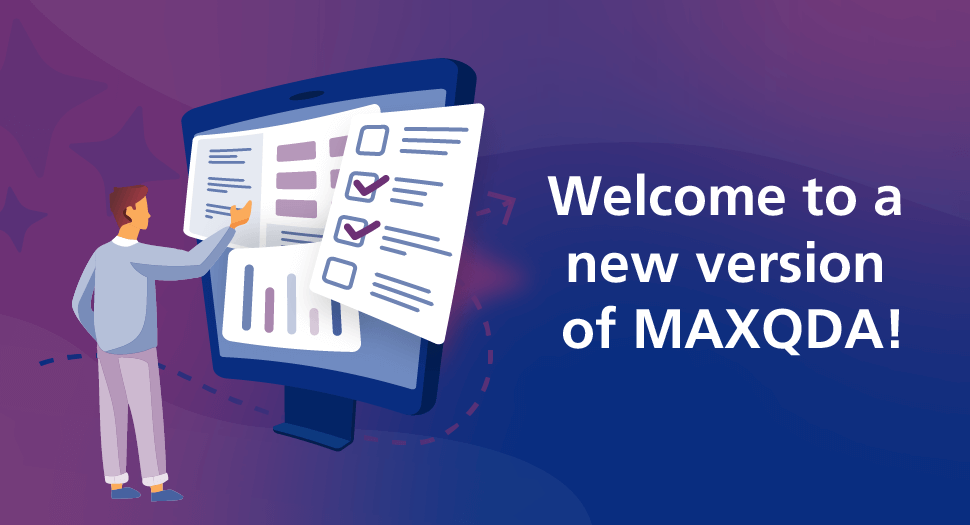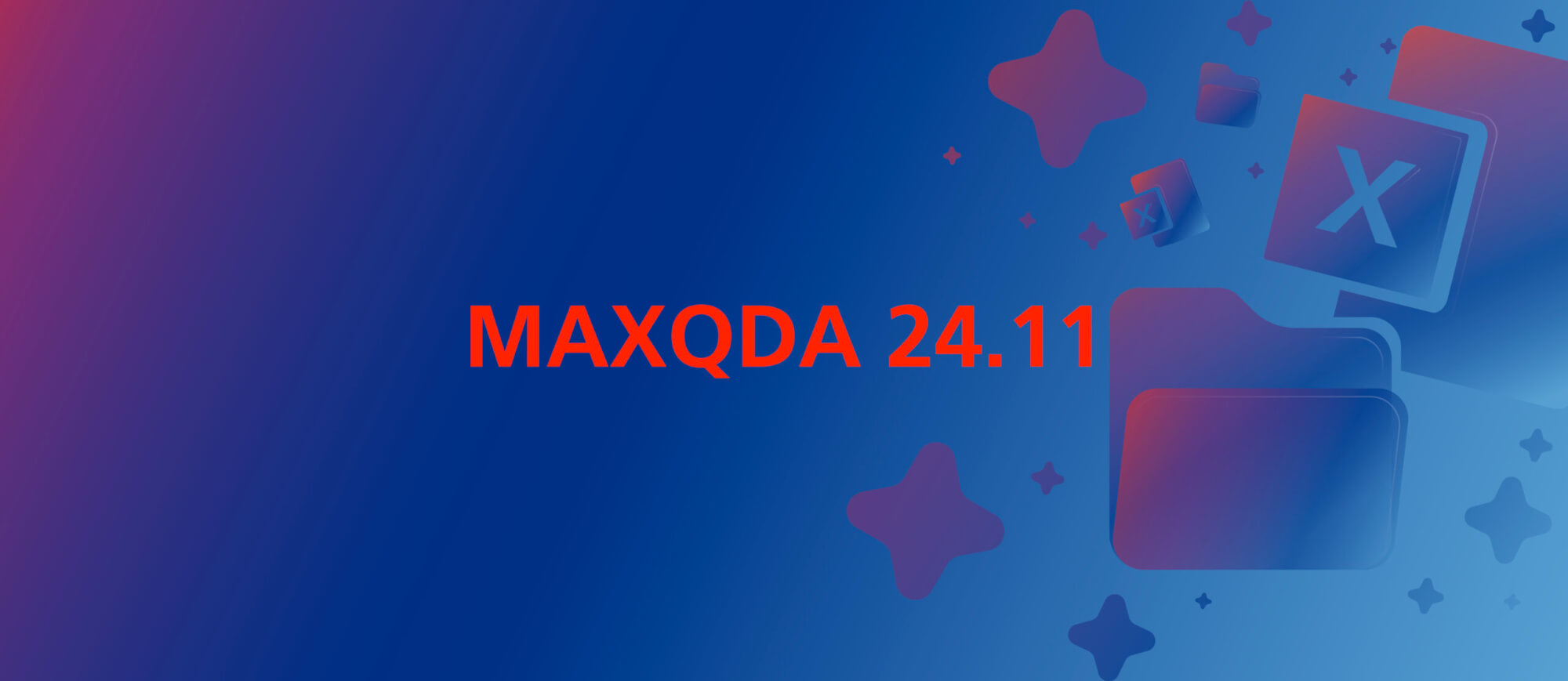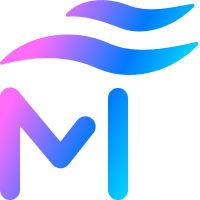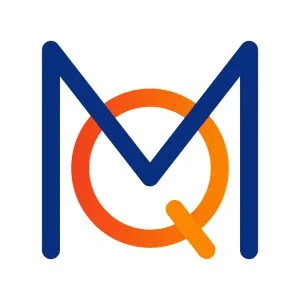June is a strange month for researchers. While some projects are coming to a close, others are just getting started. Wherever you are in your timeline, MAXQDA 24.10 brings new tools to make your qualitative analysis smoother, more flexible, and easier to manage before the summer rush.
Here’s what’s new in MAXQDA 24.10.
AI Chat with Multiple Documents
Group chat but make it qualitative analysis
You already know how powerful MAXQDA’s AI Chat can be when used with a single document. Now, with MAXQDA 24.10, we’re taking it further.
With this update, we introduce the ability to chat with multiple documents at once. You can explore patterns across interviews, compare how themes emerge in different contexts, surface tensions, overlaps, and outliers, a major advantage when working with complex qualitative datasets that span dozens of sources. Instead of treating each document in isolation, you can now explore connections and contrasts across your data in a single conversation.
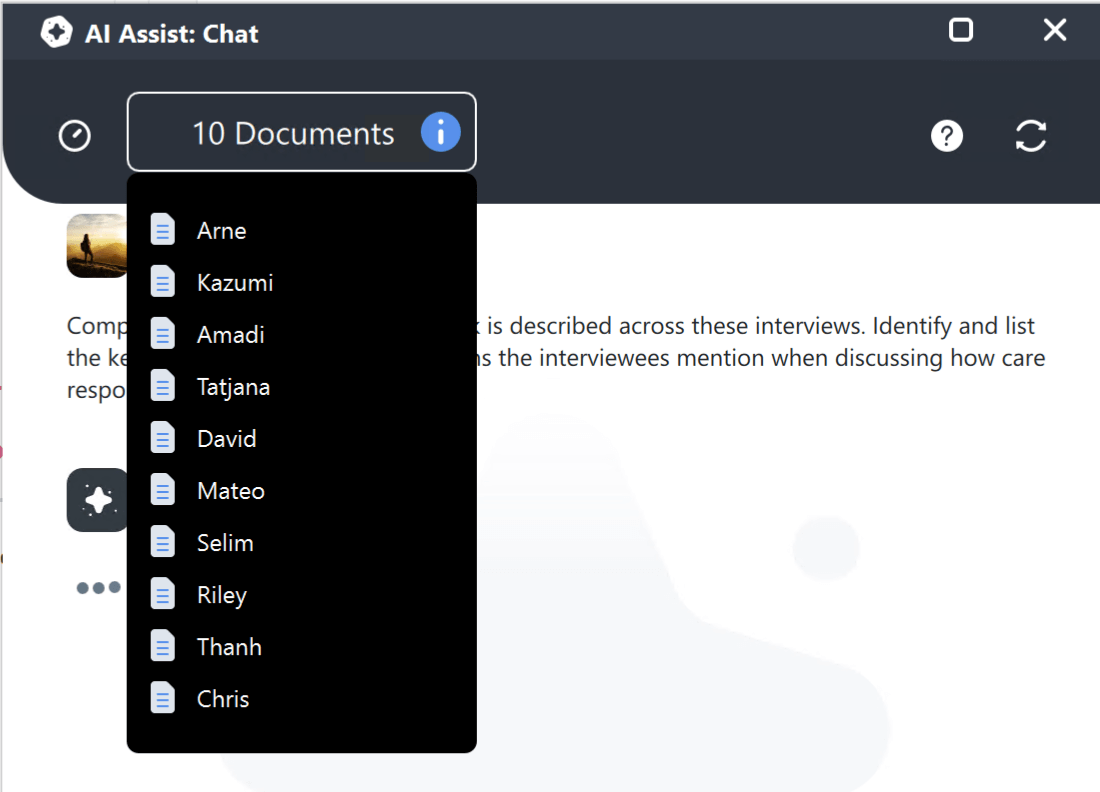
We first introduced this functionality earlier this year in MAXQDA Tailwind, our web-based companion application designed for fast, AI-supported exploration of qualitative data. If you’re already using Tailwind, you’ve had a preview of how seamless multi-document queries can be. Now, that same powerful interaction is available directly in MAXQDA, perfect for when you’re working locally or want to integrate chat findings into your full analysis workflow.
🧠 Why it matters: For many researchers, qualitative analysis involves navigating large volumes of rich, unstructured data. This feature makes it easier to explore patterns, ask broader questions, and reflect on your material from different angles; all without replacing your expertise or interpretive process.It serves to extend your analytical lens rather than override it.
📍 Where to find it: Under AI Assist, or right-click after selecting multiple documents.
Explore AI Assist in MAXQDA
AI Assist is an optional extension available for MAXQDA users. Whether you opt for the free or premium version, it’s fully embedded in the MAXQDA workspace—enabling features like AI Coding, AI Chat with individual documents or coded segments, and now, even conversations with multiple documents at once.
Add it during purchase
Want to start strong? Just include AI Assist when buying your MAXQDA license online and you’ll be ready to go from day one.
Buy itActivate it anytime
If you already have a license, you can easily activate AI Assist at any time. See if your license is eligible and unlock the AI features instantly.
Add itTry AI Assist
for free
Curious? Test drive AI Assist during your MAXQDA trial and discover how it can streamline your qualitative analysis.
Try itProject History Heatmap
See your work come to life
One of the most requested features from teams and solo researchers alike has been a better way to track activity over time. With the new heatmap, you’ll get a clearer sense of your research rhythm at a glance.
You’ve done a lot. But have you seen it? Now you can actually see which days your research was on fire, like a summer heatwave rendered in pixels. Each square represents a day, and the deeper the purple, the more intense your research efforts were on that day.
The new Project History Heatmap feature offers a visual timeline of select activity types in your project, specifically when coded segments, codes, documents, or memos were created.
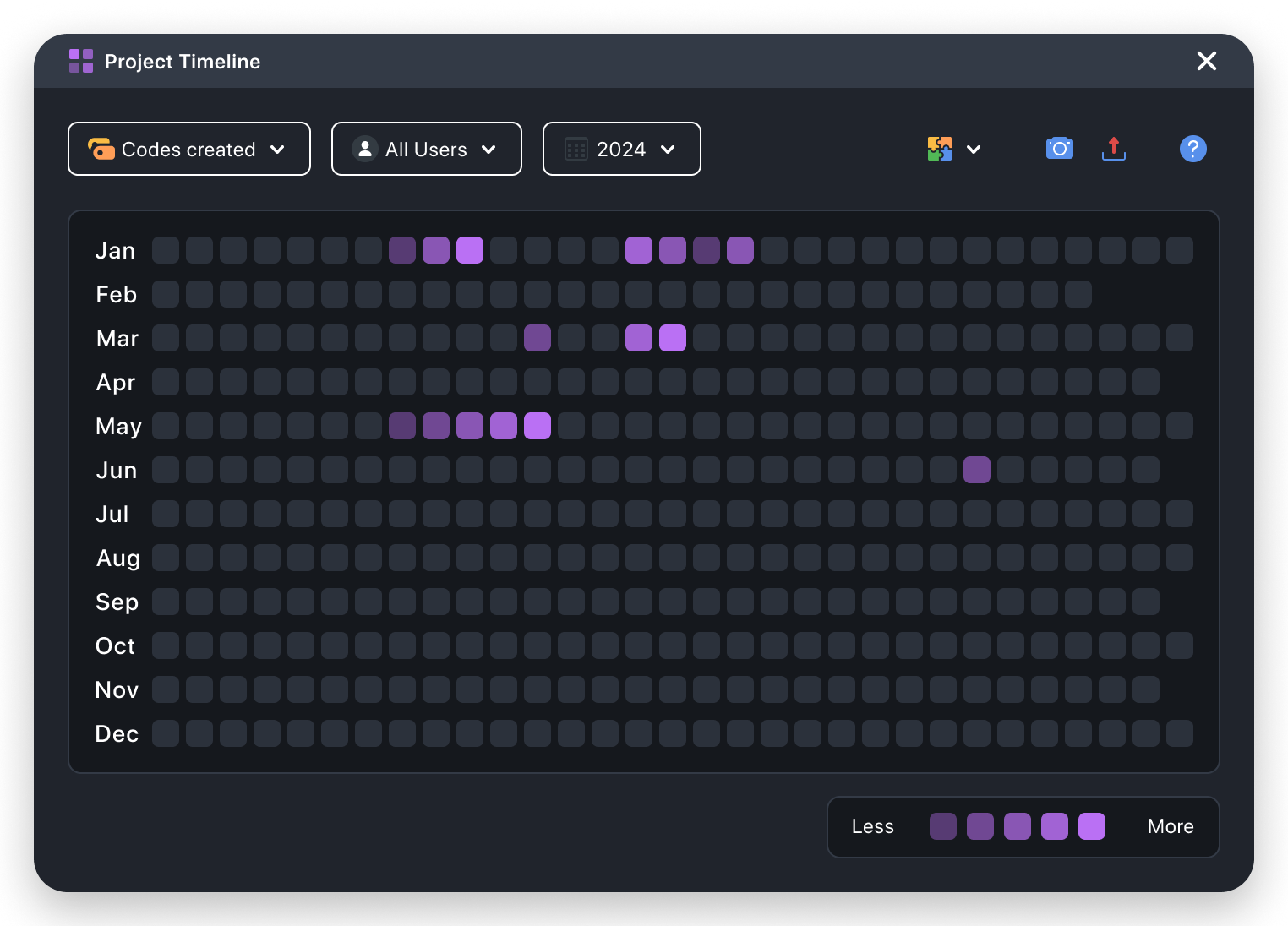
Ultimately, it’s a compact, at-a-glance overview of your research’s life cycle, making it ideal for identifying key research phases, reviewing project timelines at a glance, preparing presentations or reports with visual support, and simply appreciating how far you’ve come.
🧠 Why it matters: This is especially helpful for teams managing long-term research or evaluations. For team projects, it also helps quickly answer that eternal question: “Who added this and when?” since you are able to filter the view by user. It’s a brilliant tool for retrospectives, reporting periods, or any time you need to visualize your process.
📍Where to find it: In the Reports menu.
🎁 Bonus: now you can point to actual hot spots.
A Cleaner Look for Dictionaries
The interfaces for MAXDictio’s Dictionary, Go Word, and Stop Word lists have received a visual update designed to make them easier to navigate and use.
- Streamlined layout for clearer structure
- Renamed sections for better orientation
- Combined areas for smoother list management
- New: item counts now appear next to each category or list
- New: add comments to both dictionaries and categories
While the core functionality remains the same, these small improvements help reduce friction and make it easier to stay focused during your analysis. And for anyone juggling multiple dictionaries, there’s now a built-in way to remember what each list was actually for.
You can add a comment to any dictionary or category, using a small icon at the end of the toolbar. Comments are saved directly in the interface and display a preview when you hover over the icon—making it easier to stay organized and reduce the “what was I thinking?” moments during your workflow.
🧠 Why it matters: Cleaner layouts and visible item counts help you keep your dictionaries and stop word lists organized.
📍 Where to find it: In the MAXDictio menu.
Other Improvements Worth Noting
Because it’s not a real update without a few bonus features:
- AI Assist now speaks more languages: Dutch, Polish, Hindi, Danish, Swedish, Finnish, and Norwegian
- MAXQDA Transcription now supports Maltese and Irish
- AI Chat character limits increased.
- Memo links: You can now add internal links in memo summaries
Craving More?
Here’s the MAXQDA 24.10 update at a glance:
This one’s probably for you:
- You’re in the final two weeks of a project and existential dread is your co-author
- Your summer “break” involves transcribing 30 interviews
- You promised yourself you’d finish coding before the holidays
- You like shiny new tools almost as much as you like closure
- You need software that feels like it’s helping, not haunting
That’s a Wrap (for now)
While we’ve got more planned for later this summer (consider this the teaser trailer; there’s a lot more on the cutting room floor waiting for its moment), this release wraps up the first half of the year with features we’re especially proud of.
Whether you’re analyzing, organizing, or just trying to survive the last stretch of your research timeline, MAXQDA 24.10 is here to help you get clarity—and maybe even a bit of closure.
Until next time: Happy coding, and enjoy the sun while it lasts.

